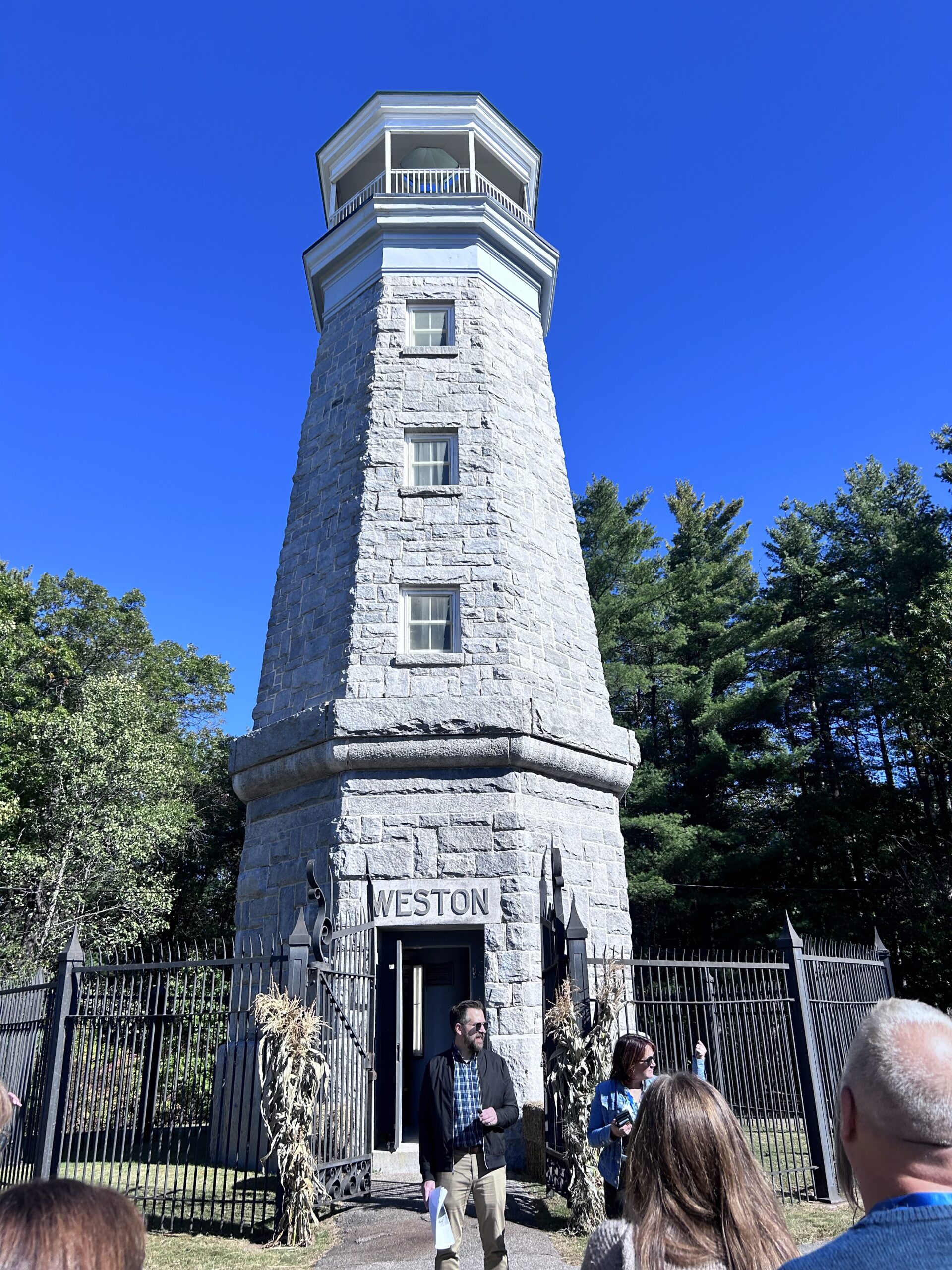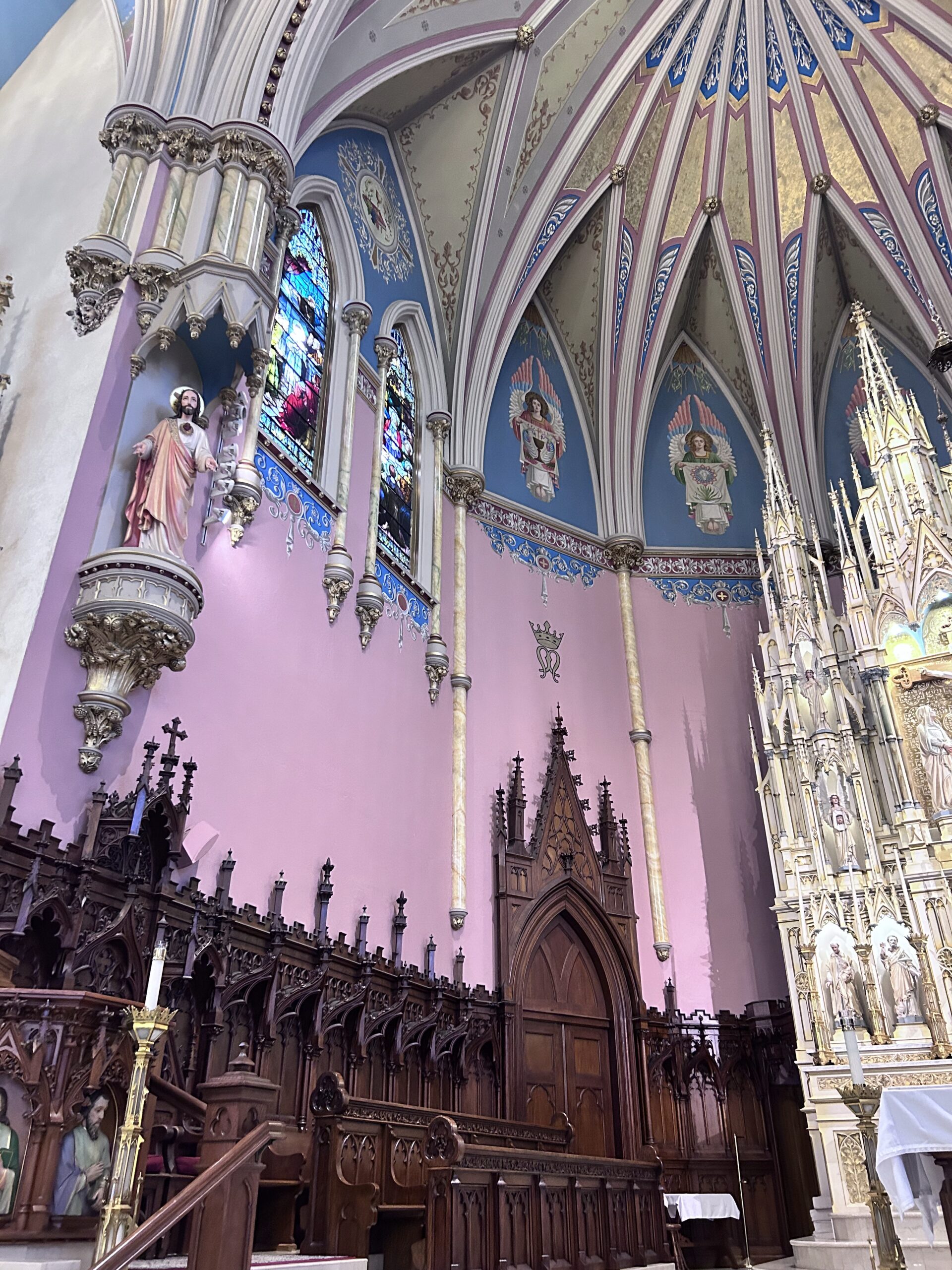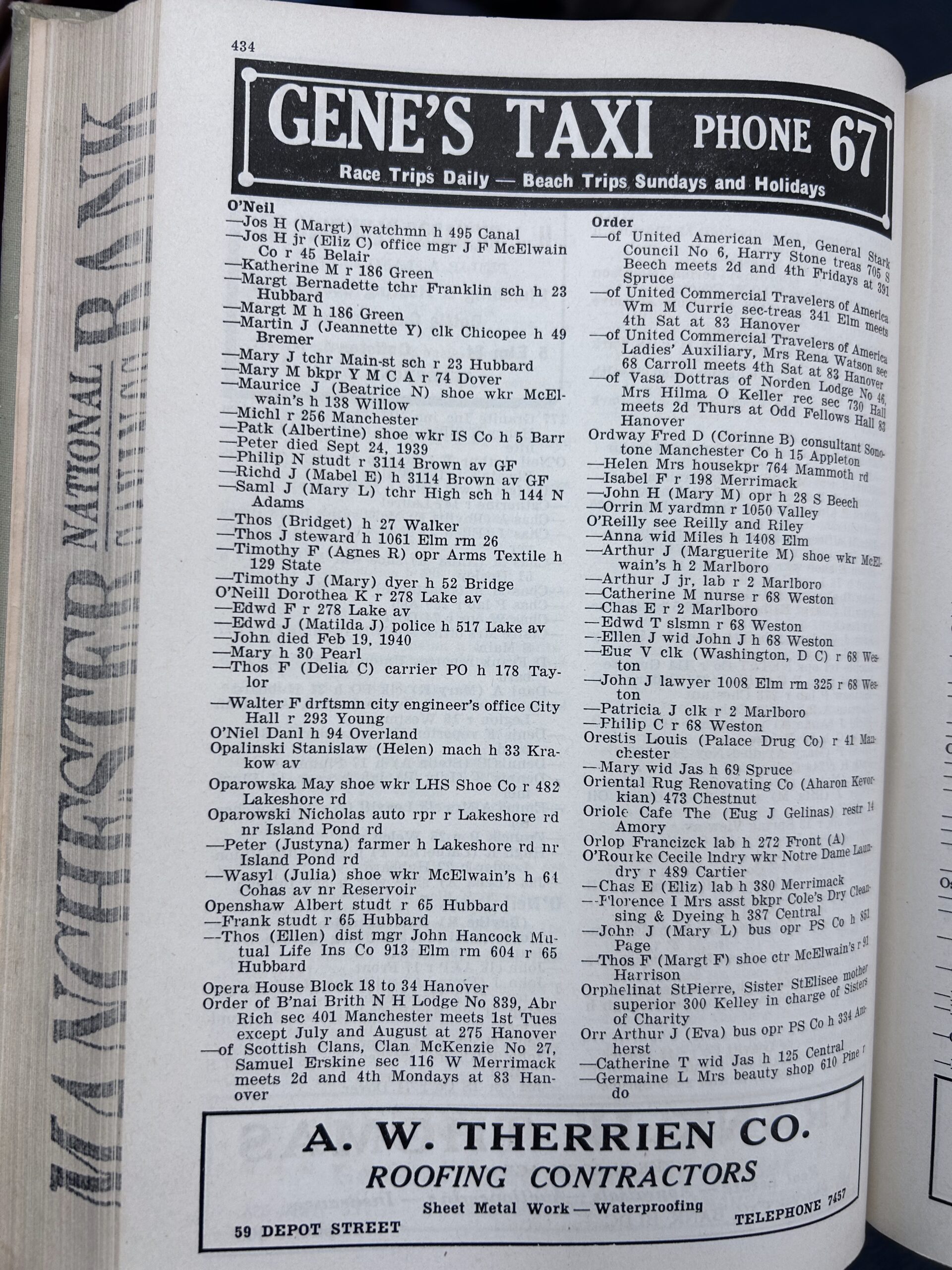LGM Program Day Reflection – History Day 2025
T
he first day of the 2025/2026 Leadership Greater Manchester program focused on the history of Manchester. It was an exceptionally meaningful and valuable day, and I was moved by this particular experience. I have deep roots in Manchester and am passionate about being fully engrossed in the historical accounts regarding the Amoskeag mills. Both my paternal grandparents grew up in Manchester, raised my father and aunt, and worked at the Chicopee Mill for many years.
The day started with a panel discussion from Bob Perrault and Selma Naccach-Hoff. They grew up in Manchester with a similar familial nucleus and strong cultural values. The synopsis of their experiences included feelings of inclusion and nurture. Selma spoke about a life changing experience she had as a young student with a limited English vocabulary that she learned in the playground. Her teacher praised her work in front of the class, and gave her the confidence to succeed in Manchester as a Lebanese American woman. Selma pursued a career as a teacher at Central High School, and has since made a positive difference to countless students. When we asked about the cultural melting pot and the way in which different ethnic groups treated each other, Bob recalled a general sense of respect between cultural groups while still maintaining a strong sense of identity and traditions. It was not a luxurious or glamorous upbringing, but they worked hard, persevered, and rose to the challenge with poise and respect for others and their community.
Our next experience was a thorough tour of the Millyard Museum by Kristy (Benoit) Ellsworth. We learned that there were two men who were integral to the Amoskeag Mill industrial development, John Stark and Samuel Blodgett. John Stark’s real estate ran from the banks of the Merrimack to Hooksett. Samuel Blodgett purchased a portion of Stark’s land (on the banks), where he spent 14 years perfecting a way to harness the strength of the river. Blodgett’s discovery ran the turbines and powered the Amoskeag mills. Manchester was originally known as Derryfield, and later received its name to not only honor Samuel Blodgett, but to gain visibility and proclaim a position as an industrial city. John Stark’s famous quote “ Live Free or Die” is only a partial recount; the full quote reads “ Live free or die, death is not the worst of evil.” It was extremely eye-opening to learn about the significant impact Samuel Blodget had on the development of the mills without receiving the recognition and prestige of his business partner, General John Stark. This is a great example of how focus, drive, and patience are necessary values when you believe deeply in a cause. Blodget was 84 years old when he completed his mission. He succeeded because he continued to rise to the challenge with tenacity and patience.
Ellsworth. We learned that there were two men who were integral to the Amoskeag Mill industrial development, John Stark and Samuel Blodgett. John Stark’s real estate ran from the banks of the Merrimack to Hooksett. Samuel Blodgett purchased a portion of Stark’s land (on the banks), where he spent 14 years perfecting a way to harness the strength of the river. Blodgett’s discovery ran the turbines and powered the Amoskeag mills. Manchester was originally known as Derryfield, and later received its name to not only honor Samuel Blodgett, but to gain visibility and proclaim a position as an industrial city. John Stark’s famous quote “ Live Free or Die” is only a partial recount; the full quote reads “ Live free or die, death is not the worst of evil.” It was extremely eye-opening to learn about the significant impact Samuel Blodget had on the development of the mills without receiving the recognition and prestige of his business partner, General John Stark. This is a great example of how focus, drive, and patience are necessary values when you believe deeply in a cause. Blodget was 84 years old when he completed his mission. He succeeded because he continued to rise to the challenge with tenacity and patience.
 A bus tour of Manchester was next on the agenda and included a view of the back of the Amoskeag Falls, Weston Tower, General John Stark’s house, St. Marie’s church, and the Manchester Historic Association’s research center. St. Marie’s church is on the National Register for Historic Places, and was the parish for French Canadian Catholics living in Manchester. The architecture of the building is built in the Victorian Gothic style, with a brick and white granite exterior. It is an impressive display of architecture and craftsmanship. However, the most impressive fact we learned about the church is that it was built by the French Canadian Catholics after their long workdays in the mills. The strength and determination displayed by the workers are impressive.
A bus tour of Manchester was next on the agenda and included a view of the back of the Amoskeag Falls, Weston Tower, General John Stark’s house, St. Marie’s church, and the Manchester Historic Association’s research center. St. Marie’s church is on the National Register for Historic Places, and was the parish for French Canadian Catholics living in Manchester. The architecture of the building is built in the Victorian Gothic style, with a brick and white granite exterior. It is an impressive display of architecture and craftsmanship. However, the most impressive fact we learned about the church is that it was built by the French Canadian Catholics after their long workdays in the mills. The strength and determination displayed by the workers are impressive.



LGM’s History Day was chock-full of history, hope, and pride. As leaders in Manchester, learning from the past and being inspired by tenacity and patience, we can continue to move forward and improve our understanding of ethnic history and cultural respect. With all the Queen City has endured, she continues to dust herself off and get back up again, like a phoenix rising from the ashes.
Resource:
https://www.dncr.nh.gov/news-and-media/manchesters-saint-marie-parish-district-named-national-register-historic-places